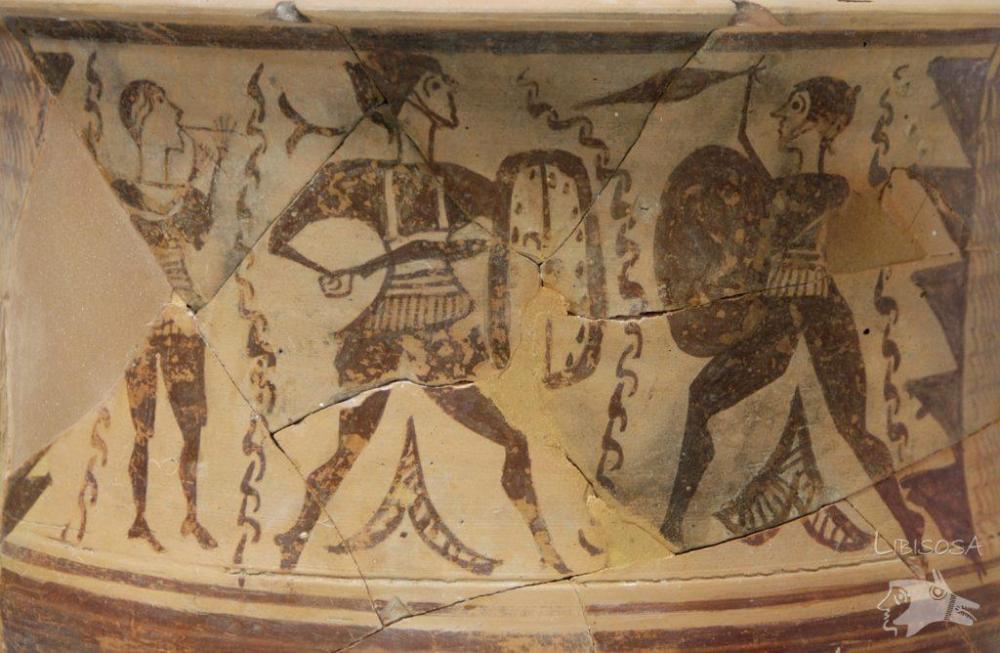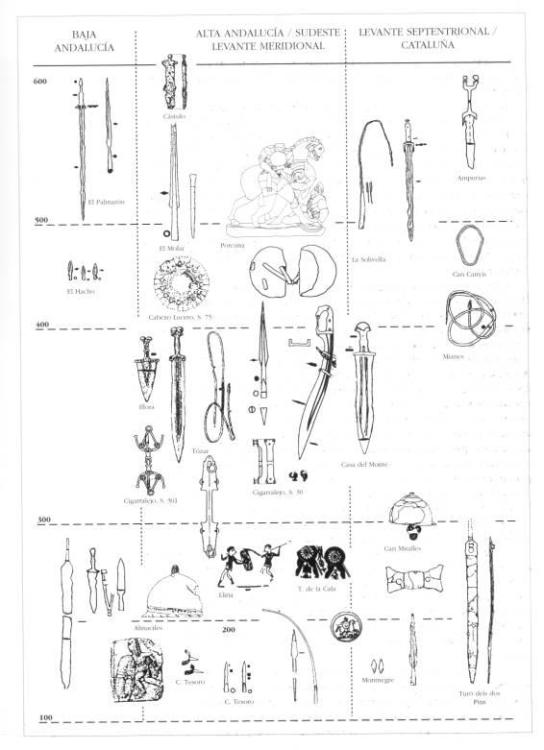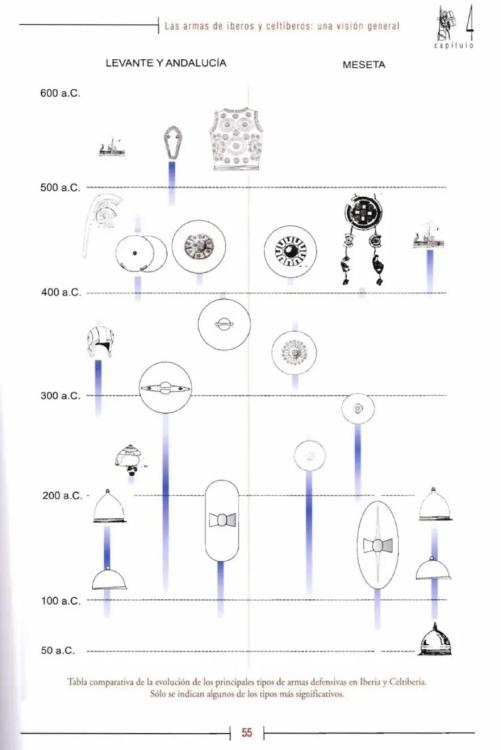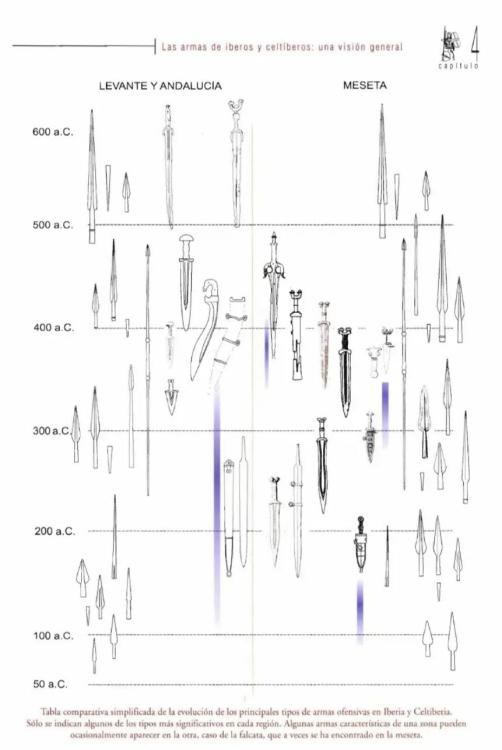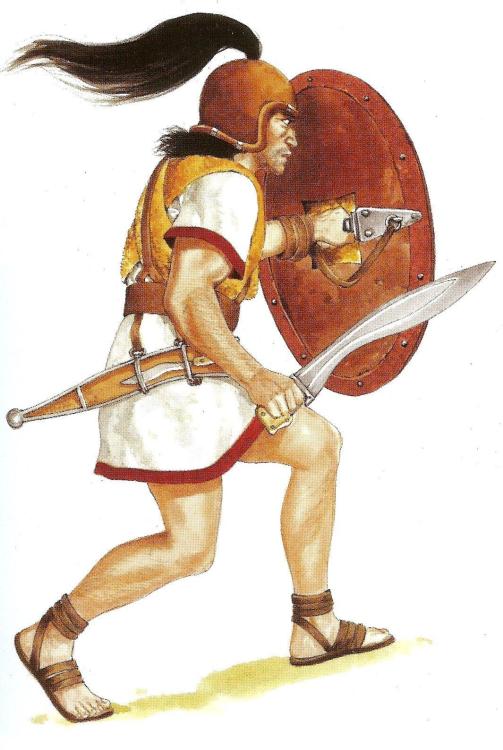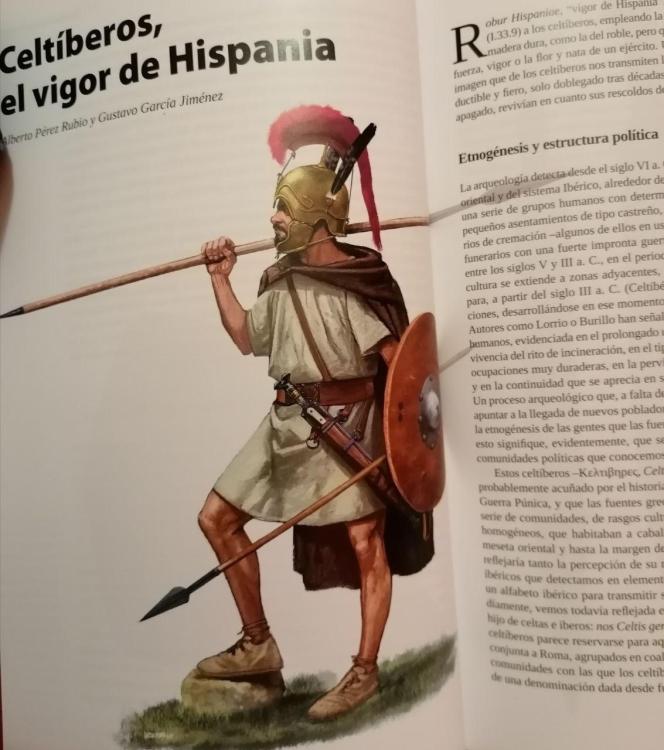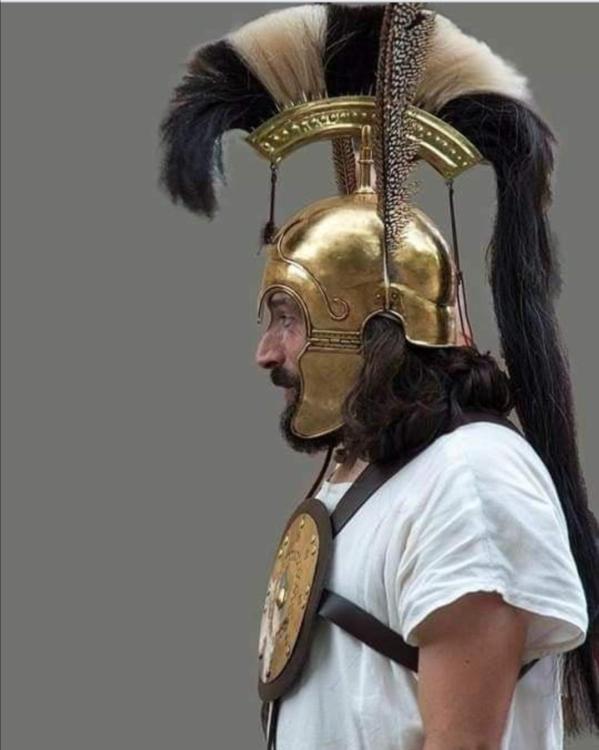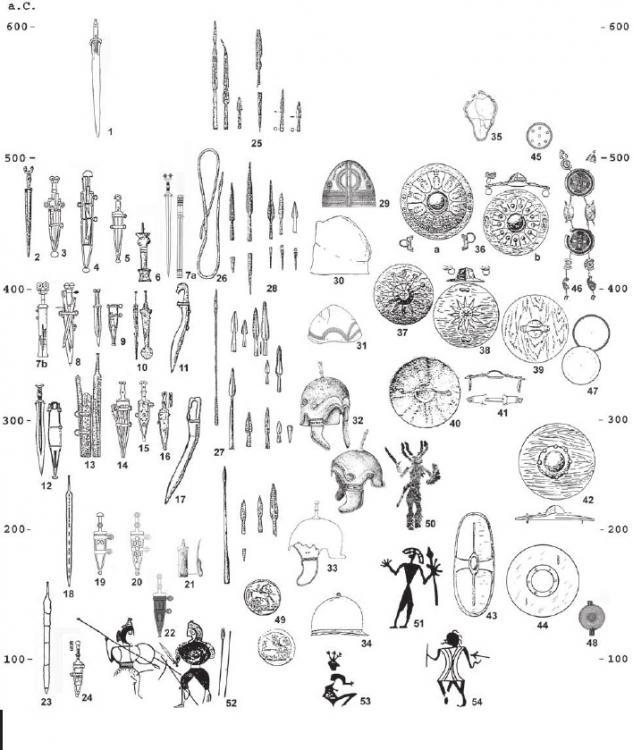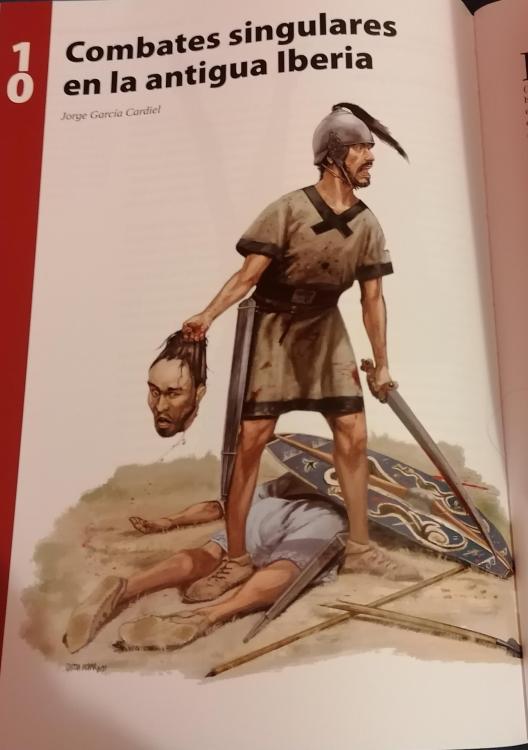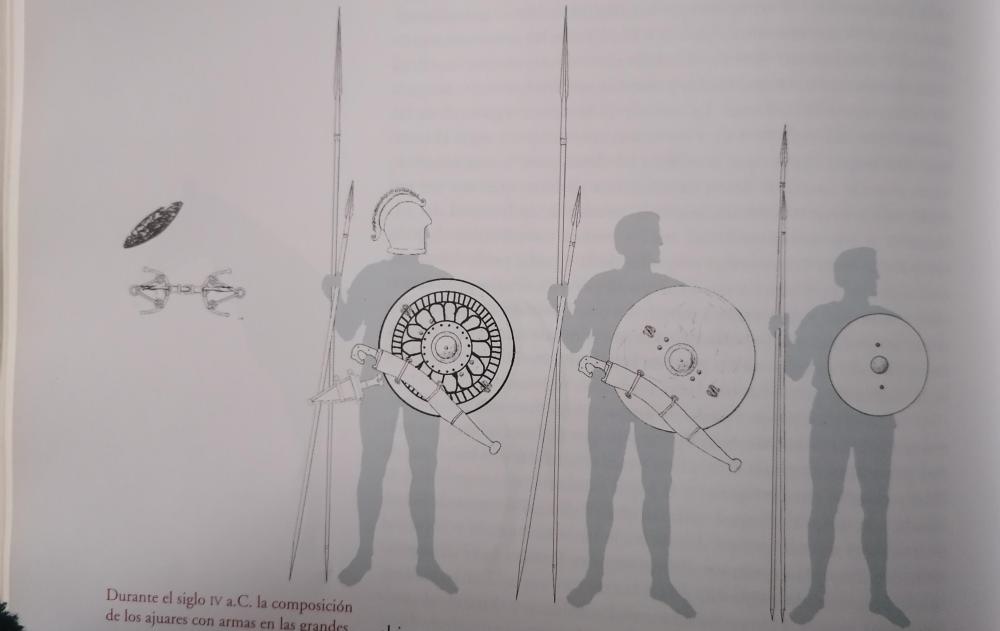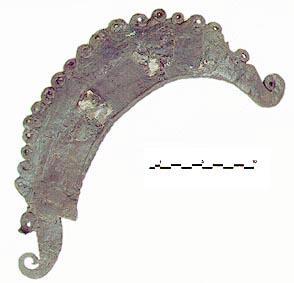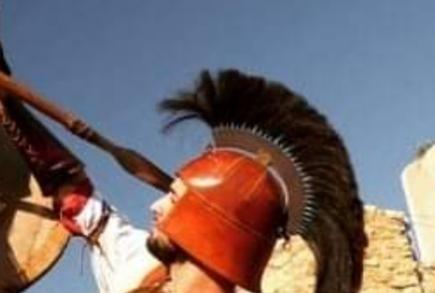-
Posts
62 -
Joined
-
Last visited
-
Days Won
3
Everything posted by TKogumelos
-

===[COMMITTED]=== Iberian Unit Textures
TKogumelos replied to wackyserious's topic in Completed Art Tasks
Only suggestion: Actual Iberian representation of greaves Carro de Merida (6th or 3rd century B.C.). Vessel from Numancia in the Celtiberian area. 2nd century B.C. -

===[COMMITTED]=== Iberian Unit Textures
TKogumelos replied to wackyserious's topic in Completed Art Tasks
I have recently learned that the time span we are working with goes from the 6th century BC to the 1st century AD, a longer period than I had imagined. So I'm going to contribute some new images. South-eastern Iberian mercenary chief at the ending of the 5th century BC by José Luis García Morán. The duel of Porcuna (a couple of sculptures from the 5th century BC) recreated by Carlos Fernández del Castillo. -
The information on the page is fine, perhaps it is too general. About the warrior in the image, he is from the 5th century BC so I think it is out of our timeline. The illustrator is the Catalan Francesc Riart, who is sometimes not too "scientific" in his illustrations. *the helmet and the armor that the rider wears are from the Celtiberian area. On the other hand, the Iberians would not have cavalry before coming into contact with Carthage, rather warriors who would go mounted to the battlefield.
-

===[COMMITTED]=== Iberian Unit Textures
TKogumelos replied to wackyserious's topic in Completed Art Tasks
Yes, that is probably. As far as I know there isn't much information about linothorax apart from the statues and the drawings of the ceramics. -

===[COMMITTED]=== Iberian Unit Textures
TKogumelos replied to wackyserious's topic in Completed Art Tasks
Some depictions of Iberian armors: Warrior figurines of Collado de los jardines.4th century B.C. (the one at the left wears some type of paddled shirt.) One of the Osuna reliefs been made about the 2nd or 1st century B.C. Another of the Osuna reliefs. *One of the warriors wears greaves because he is probably Roman. Warriors vessel of Libisosa, made around the 2nd or the 1st century B.C. by iberized Celtiberians, the Carpetanians. -

===[COMMITTED]=== Iberian Unit Textures
TKogumelos replied to wackyserious's topic in Completed Art Tasks
I suppose that is your design decision, I don't get involved in those things, I only provide information -

===[COMMITTED]=== Iberian Unit Textures
TKogumelos replied to wackyserious's topic in Completed Art Tasks
Iberian weaponry evolution.600 to 300 centuries B.C. *Left column: low Andalucia, at the center: High Andalucía and south-east peninsula and, on the right: Catalonia. Defensive: Comparison chart between the south and east of Spain and the plateau. Offensive: Comparison chart between the south and east of Spain and the plateau. Source: "Weapons, warriors and battles of the Ancient Iberia" Quesada Sanz. 2010 @wackyserious -

===[COMMITTED]=== Iberian Unit Textures
TKogumelos replied to wackyserious's topic in Completed Art Tasks
Pelt. I didn't have seen something like this before. -

===[COMMITTED]=== Iberian Unit Textures
TKogumelos replied to wackyserious's topic in Completed Art Tasks
The linothorax yes, the chain mail is later and rather associated with spoils of war. -

===[COMMITTED]=== Iberian Unit Textures
TKogumelos replied to wackyserious's topic in Completed Art Tasks
@wackyseriousThere is only one problem with linothorax and subarmalis, they are represented and mentioned but about the 3rd and 1st centuries BC. Previously in the south of the peninsula we have representations of a type of padded protection in the shape of an 8 like the one seen in the image: -

===[COMMITTED]=== Iberian Unit Textures
TKogumelos replied to wackyserious's topic in Completed Art Tasks
@wackyseriousThis figure contains some historical mistakes: too little caetra, the falcata (uncommon in the center of the Peninsula), the metal greaves (after the 5th century they were made of leather). Celtiberian warrior of the mid-3rd century BC by José Luis García Morán. -

===[COMMITTED]=== Iberian Unit Textures
TKogumelos replied to wackyserious's topic in Completed Art Tasks
I think linothorax and subarmalis are Okey. -

===[COMMITTED]=== Iberian Unit Textures
TKogumelos replied to wackyserious's topic in Completed Art Tasks
It doesn't sound like I have read anything about another type of cardiophylax. -

===[COMMITTED]=== Iberian Unit Textures
TKogumelos replied to wackyserious's topic in Completed Art Tasks
About Caro's helmet I would like to point out that maybe there is an interpretation error with the crest -

===[COMMITTED]=== Iberian Unit Textures
TKogumelos replied to wackyserious's topic in Completed Art Tasks
Yes, they stopped being used as a defensive weapon in the middle of the 5th century, become an element of ostentation. Perhaps it could be understood that Carus uses one to emphasize his leadership position. -

===[COMMITTED]=== Iberian Unit Textures
TKogumelos replied to wackyserious's topic in Completed Art Tasks
@wackyseriousThe problem is bronze montefortinoes were introduced in the Peninsula by the Carthaginians during the Punic wars. -

===[COMMITTED]=== Iberian Unit Textures
TKogumelos replied to wackyserious's topic in Completed Art Tasks
@wackyseriousMaybe mix in the same faction Iberians from the north and the south? The use of metal helmets is somewhat later but I think we can give ourselves a little "creative license" North-Eastern Iberian warrior of the mid-3rd century BC. (*Through the gauls the north-east Iberians also adopted the long shields and straight swords.) -

===[COMMITTED]=== Iberian Unit Textures
TKogumelos replied to wackyserious's topic in Completed Art Tasks
@wackyseriousMaybe less decorated, perhaps more something like this: but also it were found metal crests for leather helmets. Different types of southeastern Iberian infantry during the 4th century BC. Source: "Weapons, warriors and battles of the Ancient Iberia" Quesada Sanz. 2010 Crest of El cigarralejo dated about the early 4th century BC -

===[COMMITTED]=== Iberian Unit Textures
TKogumelos replied to wackyserious's topic in Completed Art Tasks
@wackyseriousThe stripe pattern was introduced in the Balearic Islands by the Phoenicians according to Strabo. Iberians used other type of stripe pattern composed by two red lines. South-eastern Iberian burial by José Luís García Moran already 4th century BC. -

===[COMMITTED]=== Iberian Unit Textures
TKogumelos replied to wackyserious's topic in Completed Art Tasks
In this thread, as John-of1999, I've posted some images about the different tribes of Iberia. https://forums.taleworlds.com/index.php?threads/research-iberians.247627/page-3 -

===[COMMITTED]=== Iberian Unit Textures
TKogumelos replied to wackyserious's topic in Completed Art Tasks
Those are drawings by Ángel García Pinto and Angus Mcbride. The problem with these illustrators is that they mixed elements from different cultures and times. -

Bibliography and references about ancient times (+ book reviews)
TKogumelos replied to Genava55's topic in General Discussion
I can bring some articles: Information about Iberian weaponry through Braganza brooch: https://www.academia.edu/732699/_The_Braganza_brooch_warrior_and_his_Weapons_the_Peninsular_context_ Information about Celtiberian culture and weaponry evolution: https://www.researchgate.net/publication/29726494_War_and_Society_in_the_Celtiberian_World Some information about hispano-chalcidian helmets and Other defensive weapons in the Peninsula. https://www.researchgate.net/publication/282798470_R_Graells_AJ_Lorrio_M_Perez_A_new_Hispano-chalcidian_helmet_fragment_from_Castillejo_Prov_Soria_in_the_RGZM_Archaologisches_Korrespondenzblatt_20151_91-104 The Celts in Iberia. An overview: https://www.researchgate.net/publication/29726495_The_Celts_in_Iberia_An_Overview A very short summary about the war in the different tribes of Iberia: https://www.uam.es/FyL/documento/1446794608623/Quesada-2015-Iberians-as-enemies.pdf Sources on Spanish: https://www.uam.es/FyL/TiposDeArmas/1446788697834.htm?language=es&nodepath=Tipos+de+Armas https://www.uam.es/FyL/TiposDeArmas-Defensivas/1446788699134.htm https://www.academia.edu/12530827/Un_heroe_para_Hispania_Viriato https://www.academia.edu/35385190/F_Quesada_Sanz_2010_Armas_de_la_Antigua_Iberia_De_Tartesos_a_Numancia_Madrid_La_Esfera_de_los_Libros https://www.researchgate.net/publication/343166745_Los_Relieves_de_Osuna https://dialnet.unirioja.es/servlet/articulo?codigo=4736033 https://dialnet.unirioja.es/servlet/articulo?codigo=6270183 https://www.researchgate.net/figure/El-guerrero-de-Mosqueruela-1-y-las-representaciones-de-guerreros-en-la-ceramica_fig8_264744438 https://dialnet.unirioja.es/servlet/articulo?codigo=902332 https://www.researchgate.net/publication/321424448_El_jinete_que_regreso_a_Lucentum_Un_lagynos_iberico_decorado_del_Tossal_de_Manises_Alicante Some classic sources: http://exploringcelticciv.web.unc.edu/diodorus-siculus-library-of-history/ Some book recommendations: -"Weapons, warriors and battles of the Ancient Iberia" Quesada Sanz. 2010 -"Guerreros de la antigua Iberia" Despertaferro. 2020 (*Not translated.) -
https://forums.taleworlds.com/index.php?threads/research-iberians.247627/page-3 (Yo soy John-of1999) Vuelvo a copiar el mismo enlace aquí porque, después de leer fuentes con mayor seriedad académica ("Armas de la antigua Iberia" de Quesada y el suplemento "Guerreros de la antigua Iberia" de Despertaferro), he cambiado la mayor parte de imágenes que publiqué y también he añadido información. (*Todo en inglés porque es el idioma en el que hablan los modders.) (*También aclarar que no copio y pego aquí la información directamente porque me llevaría mucho tiempo.)

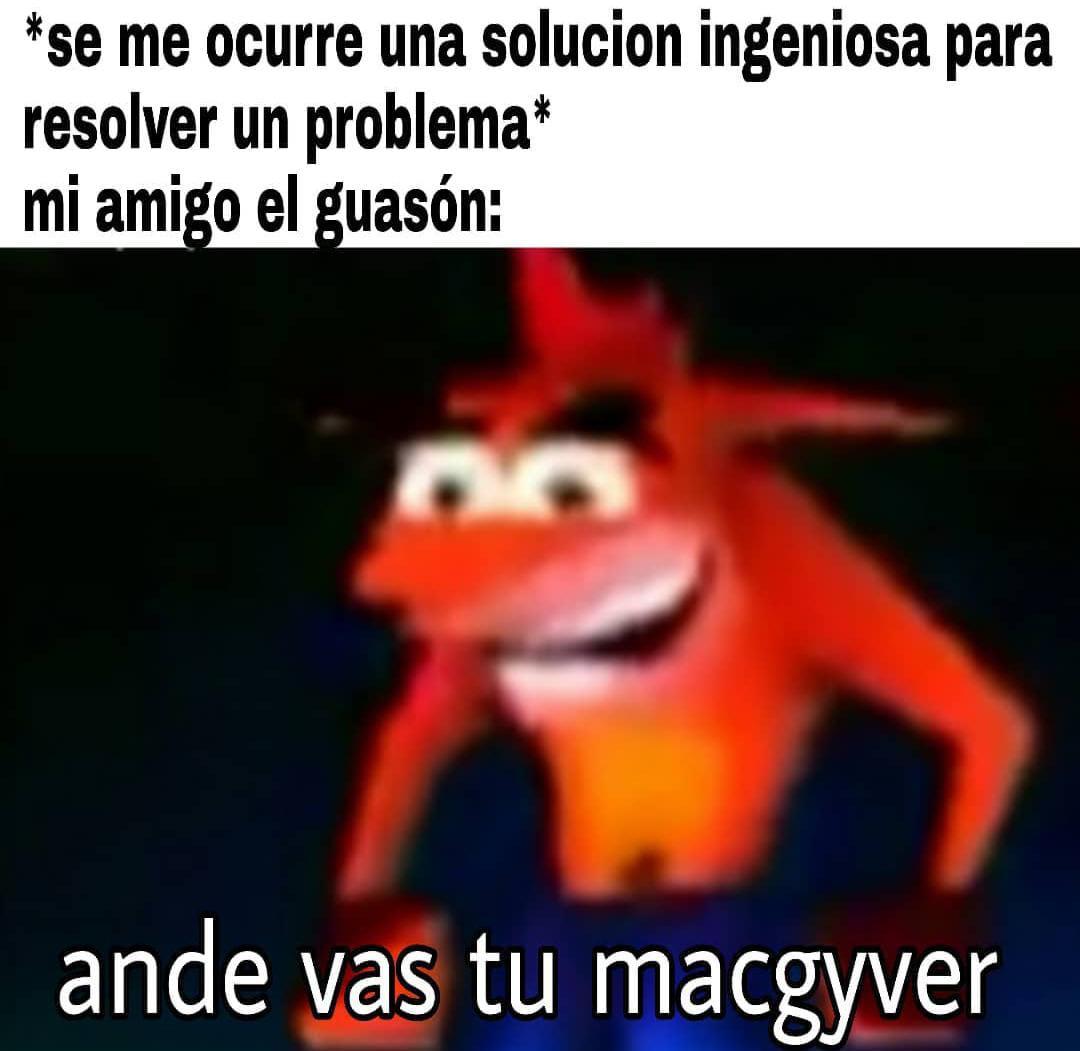
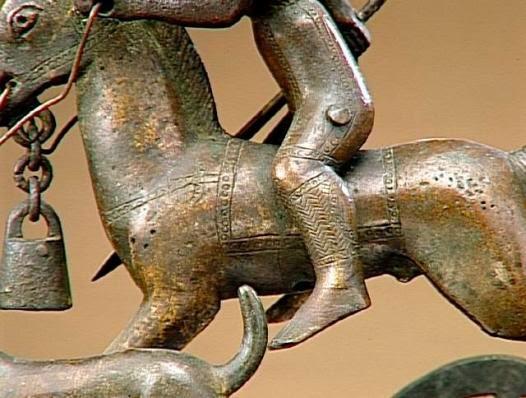
.jpg.ddcaec3df89f52a08daf499e89cde6e4.jpg)

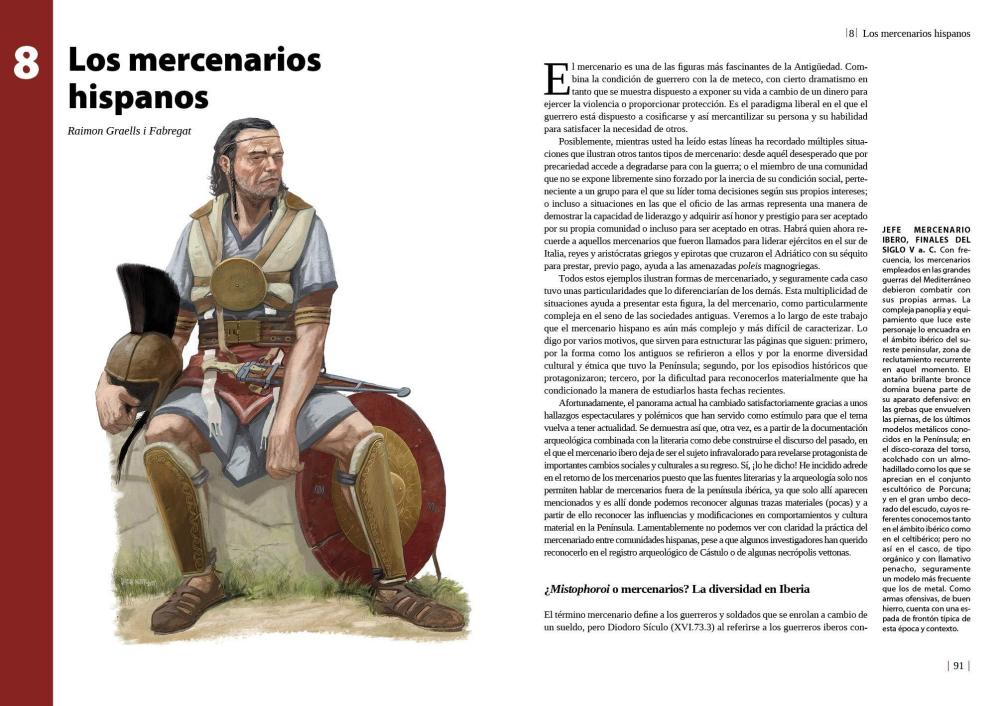
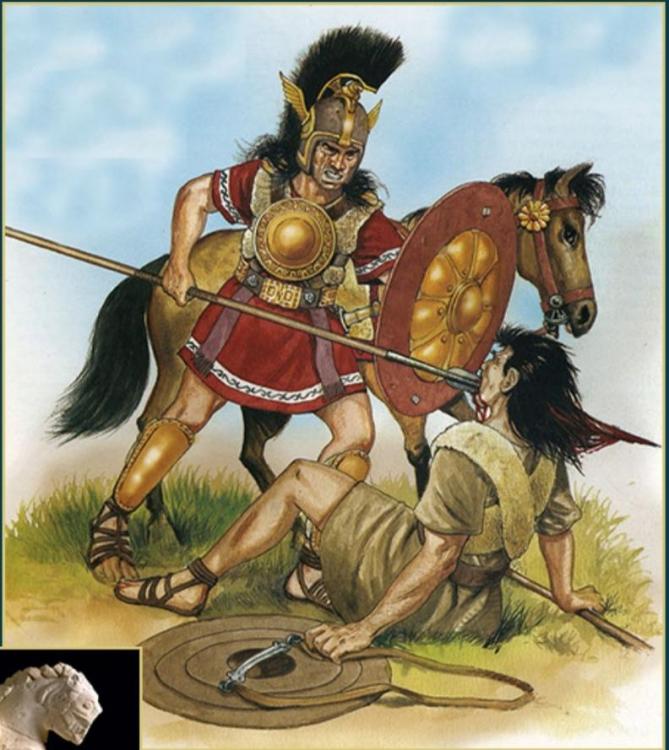

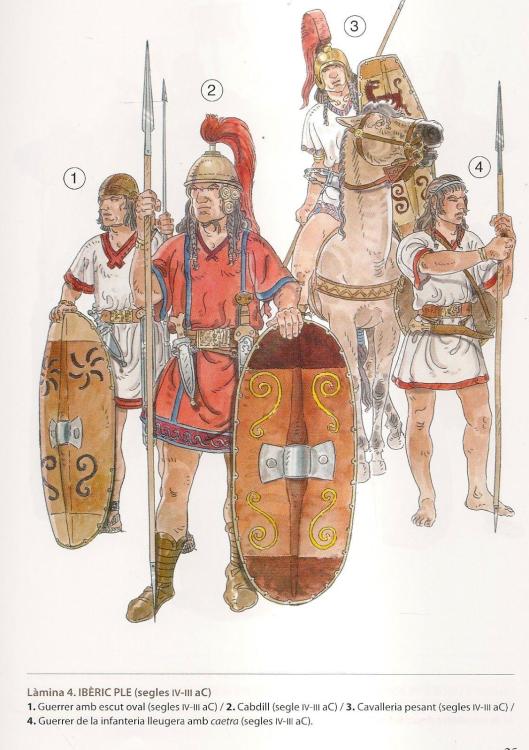
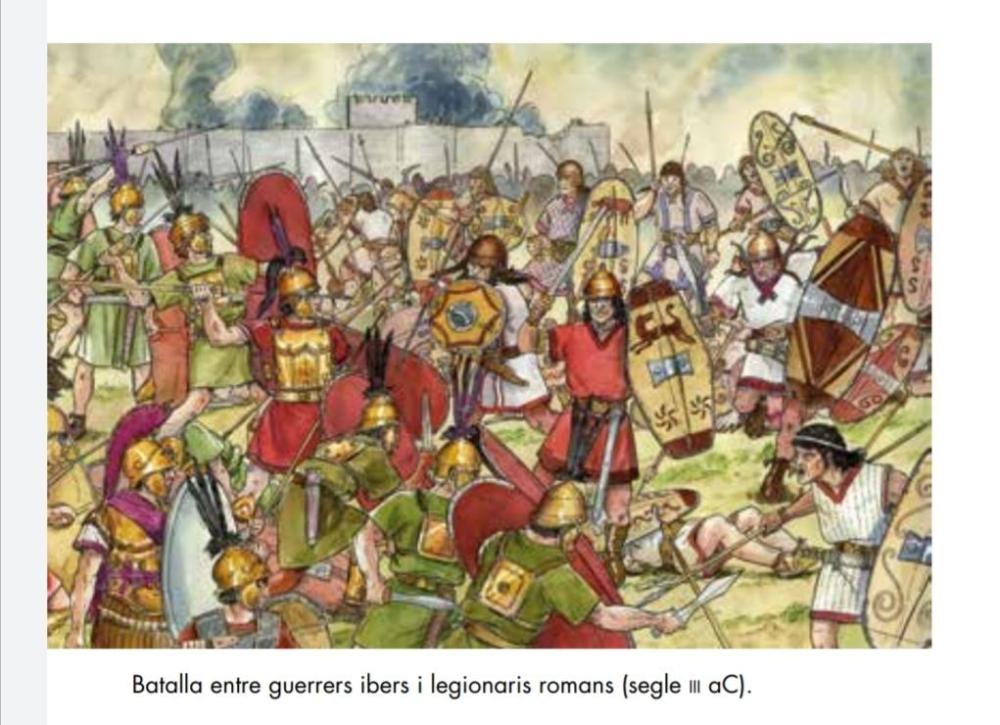
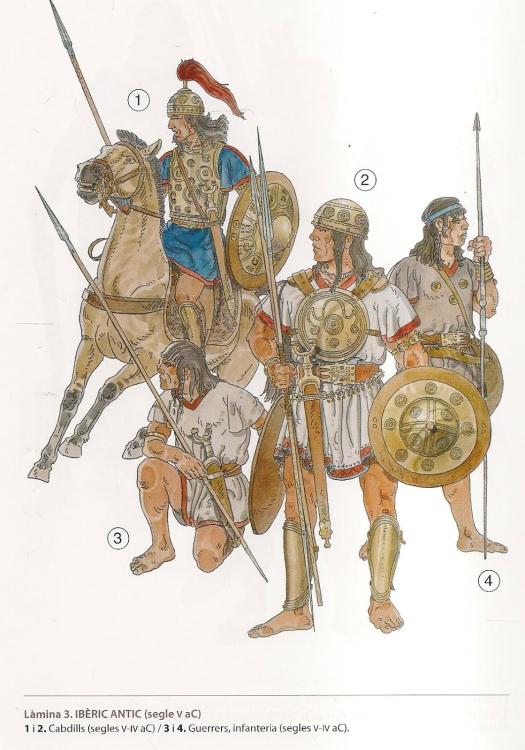
_01.thumb.jpg.23a1f392a16101a0ffac1951ef093173.jpg)
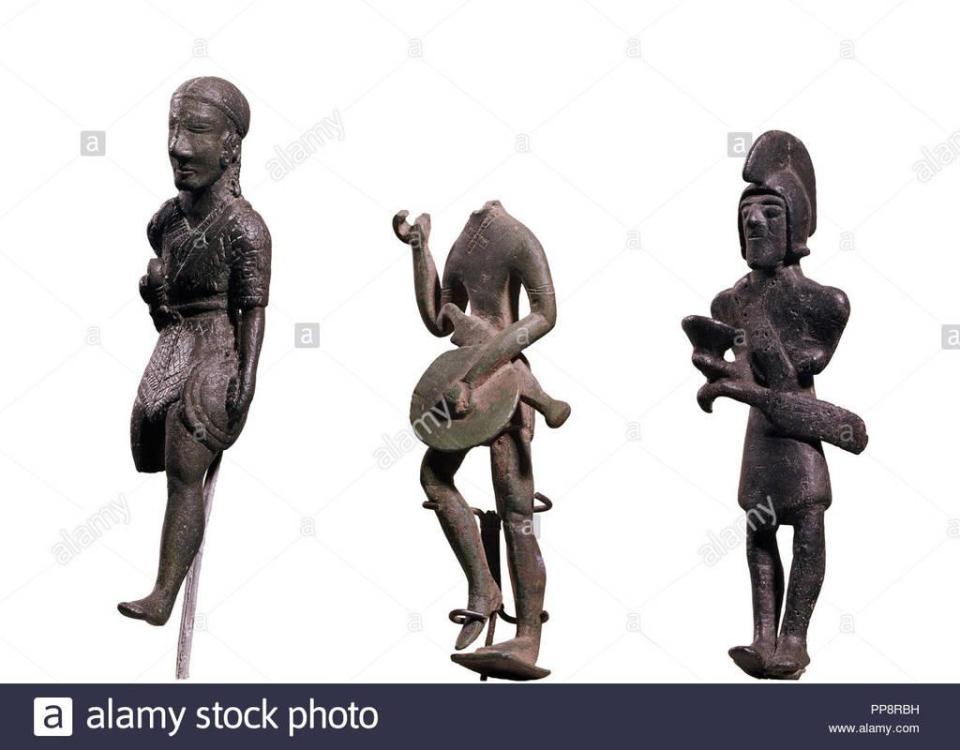
_01(1).thumb.jpg.d33614017361a4b8dea5ca3b6481ebd4.jpg)
